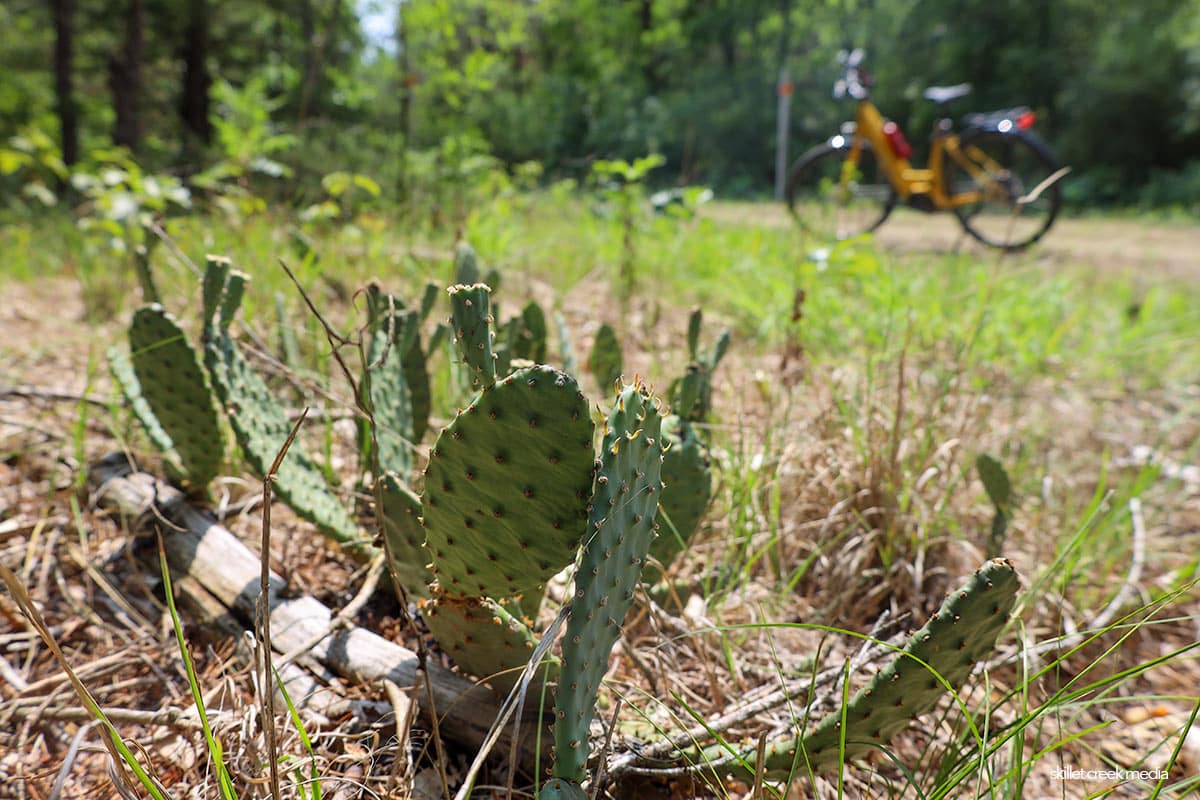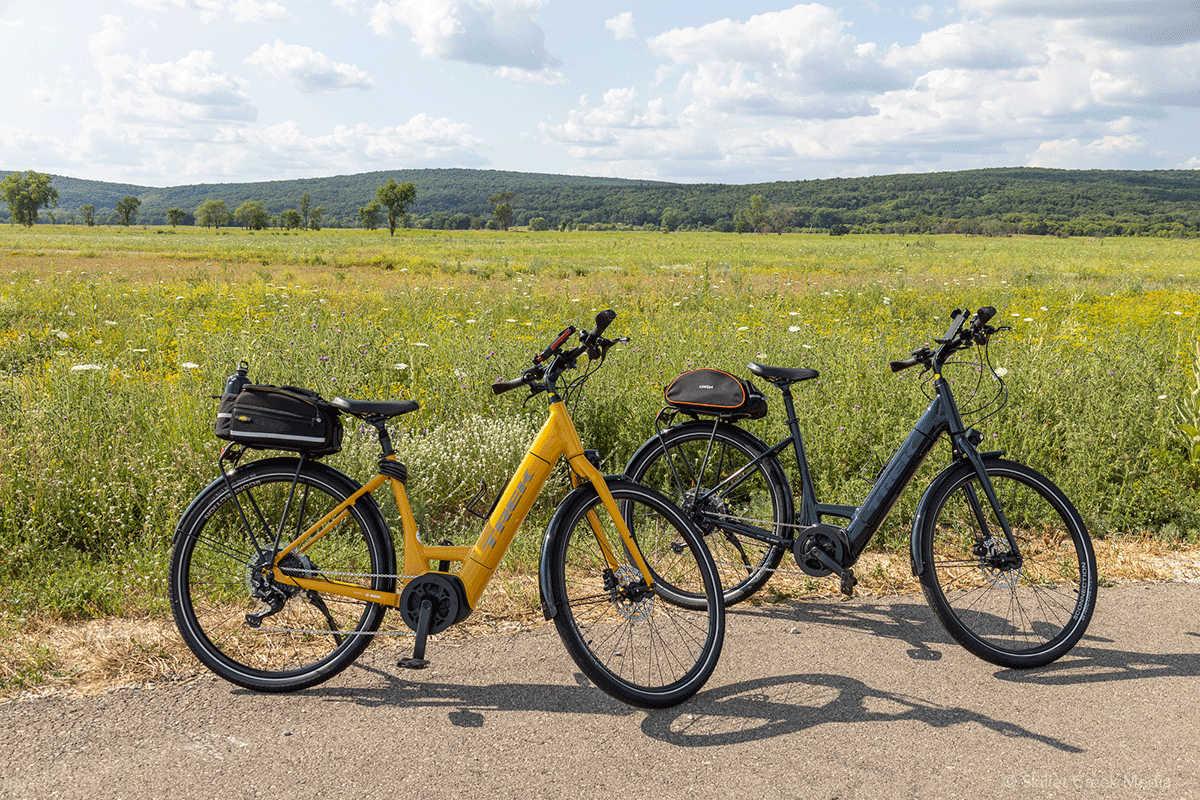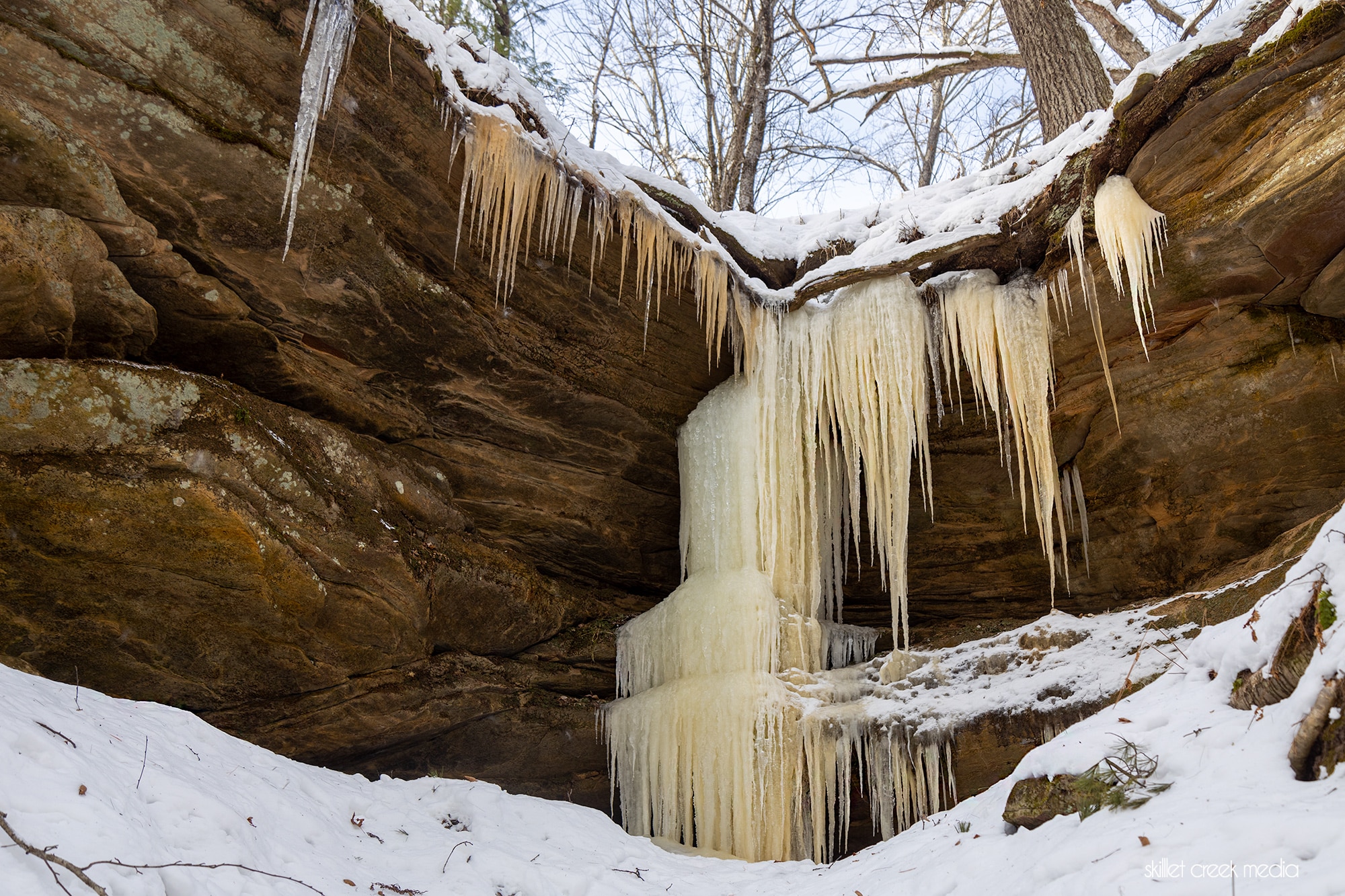The Pine River Trail in Richland County, Wisconsin is a 14.3-mile multi-use recreational trail located…
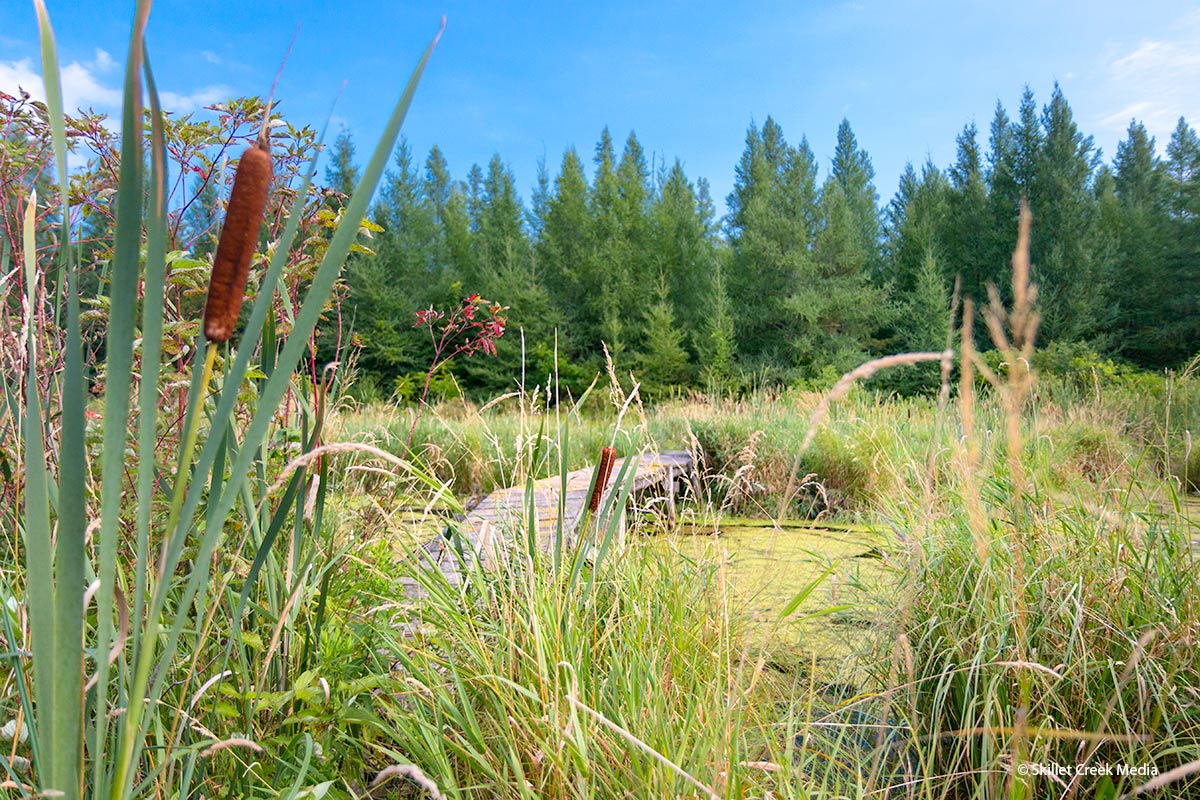
Page Creek Marsh State Natural Area is less than an hour drive from Devil’s Lake State Park and is certainly one of the most “wild” state natural areas we’ve been to for our Backyard Explorer series.
Page Creek is 643 acres of swamp, bog, wet prairie, sedge meadow and sandy oak savanna. The area is known as a staging area for sandhill cranes during the fall migration. It is also said to be home for two rare animals; the blanding’s turtle and the slender glass lizard. On our visit in early August, we saw sandhills, a variety of hawks & other birds, an egret and a large variety of butterflies & dragonflies.
The trails at Page Creek Marsh are not for folks looking for a “walk in the park.” In fact, if you’re directionally challenged, you may want to put a waypoint on your GPS to mark the location of your car, just in case. Bug spray, long sleeves and pants are also good ideas.
There are two small areas where visitors could park both along county road K. One is simply a gated old road and one, a small parking area. We nearly missed the main parking which was a small patch of open grass and only recognisable as a natural area due to the garlic mustard boot brush sign which could be seen from the road. Hiking into Page Creek, you need to stay aware of the trail which is little more than a deer trail through the sandy oak savanna area. In spots the trail becomes nearly impossible follow and only a bit of investigation will keep you on the right track. What signs there are are old, falling down and facing only in one direction.
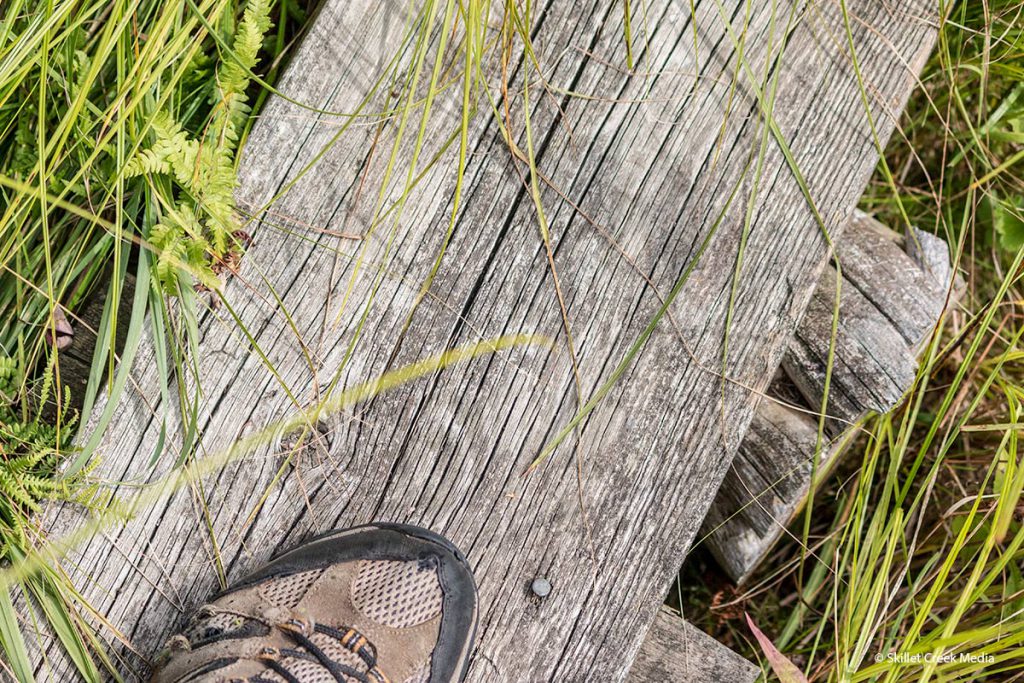
Near the marsh, the trail drops into thick brush and then again seems to disappear completely. Again, with some investigation, the trail can be found under thick brush. Stooping low you can push through the thicket to get to the bank of the marsh. If you reach the right spot, you need to look down through the tall grass and cattails to find the boardwalk. The boardwalk through the marsh is made up of 2×12(ish) boards, often near rotten, loose and unstable. Hikers have to feel their way through the tall grass while walking along the boardwalk. It’s easy to lose your footing, which depending on the time of the year, could make for a wet day.
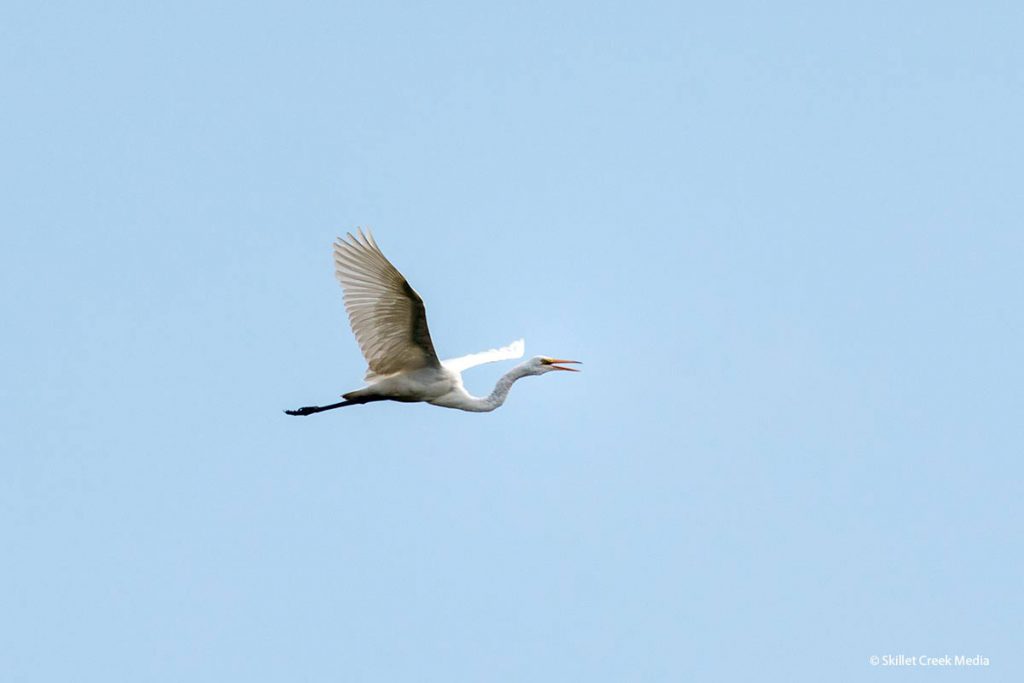
It was in the marsh where we encountered the most wildlife. As we came to the small wooden bridge in the feature photo (top), a loud squawking alerted us of an egret rising out the tamarack swamp in front of us. We also saw a few ducks and heard cranes in the distance. As we navigated the rickety boardwalk, we were surrounded by dragonflies and butterflies who were drawn to the hundreds of pink flowers atop 5 foot tall joe-pye weed. This is really a beautiful spot and well worth the effort.
The boardwalk continued into from the marsh into the tamarack forest on the other shore. It was nearly impossible to not walk off of the boardwalk just to get around the overgrown plant life along the bank. The soft planks led us into the deep tamarack swamp area. On our visit the forest floor was dry, but I wouldn’t plan on that for most visits! Eventually the trail leads back up a hill into sandy savanna once again. The trail again becomes lost in a sandy glade on the edge of a hilltop prairie.
Standing at the edge of the prairie, we had hiked most of Page Creek’s “primitive trail” and there was no way to continue on without without GPS, or at the very least, a compass to guide us. From this point, we turned back and made our return to the car.
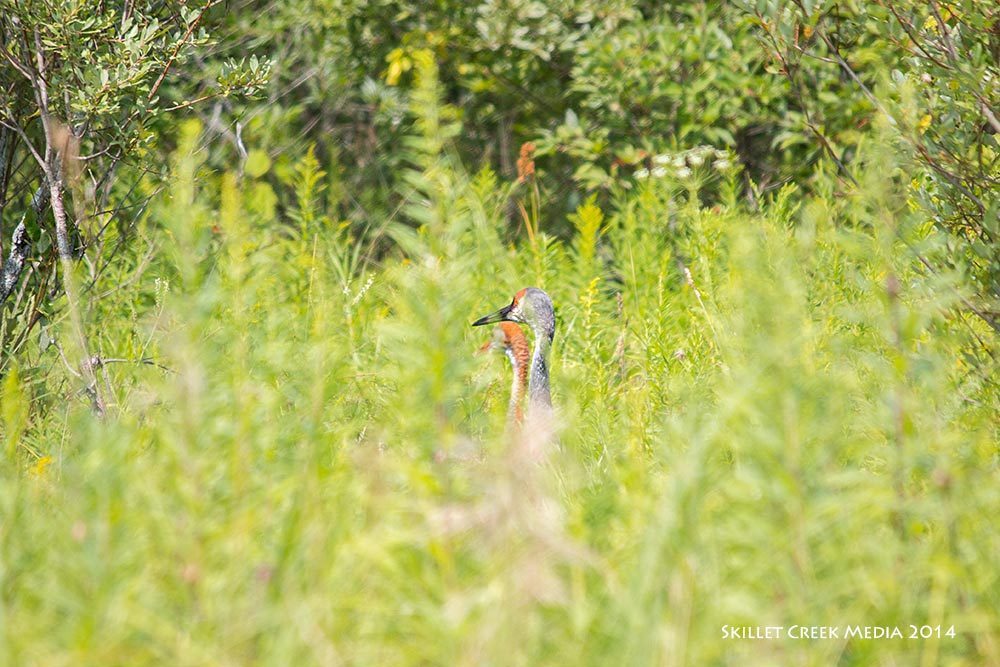
Page Creek State Natural Area is a wonderful slice of northern Wisconsin wilderness and worth the trip just to see the wildlife. Depending on conditions and season allow yourself about 2-3 hours to hike the trail, longer if you spend a lot of time watching the critters. Again, visitors to Page Creek need to be comfortable in woods and marsh with very primitive or no trails to guide you.
If you go, you need to be comfortable in woods and marsh with very primitive or no trails to guide you. You’ll also want to bring bug spray to deal with mosquitoes and ticks. Oh yeah, and bring a sense of adventure… you’ll need it.
More Information
- Directions to Page Creek Marsh from Devil’s Lake (Google Map)
- Page Creek SNA – Wisconsin DNR
- Page Creek Marsh – Nature Conservancy

For nearly 2 decades the Skillet Creek blog has focused on 3 main goals; To inspire you to visit and explore the Devil’s Lake region, to help you get the most your visit by sharing tips, events, and other helpful information. Lastly to advocate for our environment & wildlife and talk about how we can keep our natural areas amazing now and into the future! That last goal can sometimes cause controversy, but it’s the only way we can accomplish the first two. – Derrick Mayoleth, Owner.

